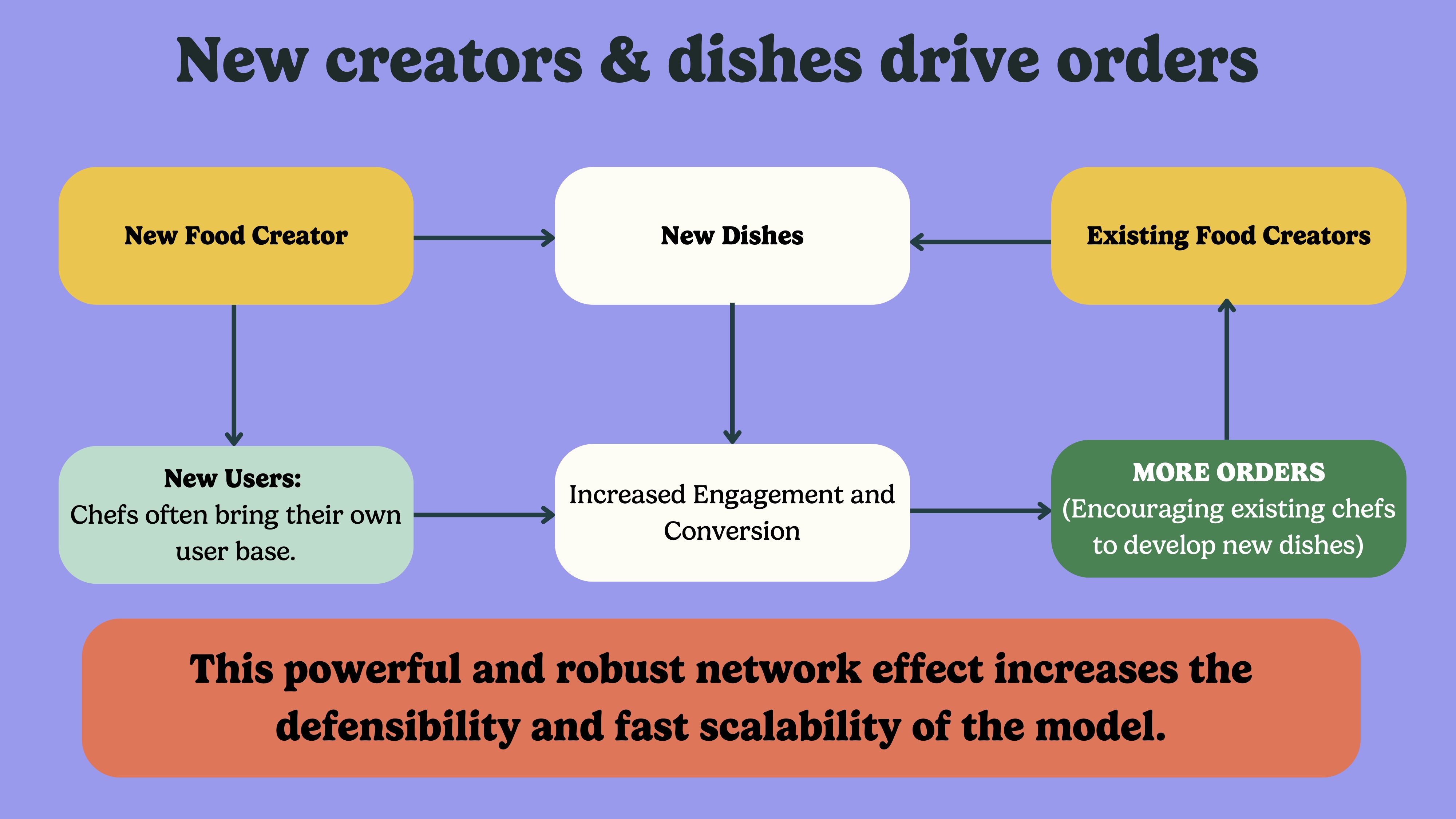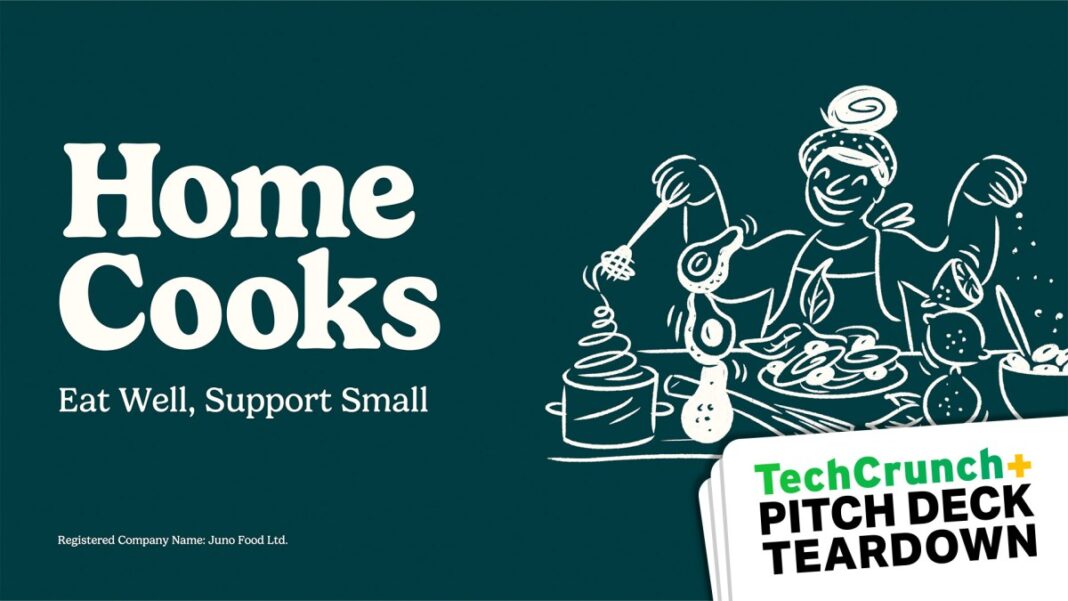Originally a Facebook group started during the COVID-19 lockdowns in 2020 that people used to cook healthy meals for others nearby, HomeCooks has now evolved into a comprehensive marketplace for chefs. It facilitates the entire process for its chefs, from cooking to delivery, and offers over 200 meal options. The company recently raised $3.2 million in crowdfunding on Seedrs.
Positioning itself as the “Etsy of food,” HomeCooks has grown rapidly and today serves around 7,000 customers. Let’s look at how it told its story for its crowdfunding campaign.
Quick spoiler alert here: At 25 slides, this deck is way too long, but it’s also one of the best pitch decks I’ve seen in a hot minute.
We’re looking for more unique pitch decks to tear down, so if you want to submit your own, here’s how you can do that.
Slides in this deck
The company shared its 25-slide deck in full, without redactions or edits. Here’s how that shakes out:
- Cover slide
- Mission slide
- “The Etsy of Food” slide
- How it works for eaters slide
- How it works for food creators slide
- Revenue and traction metrics slide
- Problem interstitial slide
- Problem for eaters slide
- Problem for food creators slide
- Solution for food creators slide
- Market size slide
- Competition slide
- Competitive advantage slide
- Food waste slide
- Business model for food creators slide
- Food creators growth slide
- Business model slide
- Product slide
- User acquisition slide
- Team slide
- Plan/use of funds slide
- Revenue growth and expansion plan slide
- Closing interstitial slide
- Social impact slide
- Closing slide
Three things to love
This isn’t a perfect pitch deck, but I’ll be damned if it isn’t an incredibly good one. Here are some of the highlights:
Threading the marketplace needle
There are so many reasons why marketplaces are gruelingly hard to pull off. First and foremost, marketplaces require a large number of buyers and sellers to be successful. However, attracting sellers without a substantial buyer base, and vice versa, is a significant challenge best described as a “chicken-and-egg” problem. Also, managing the balance between supply and demand can be tricky: Too much supply can lead to low prices and dissatisfied sellers, while too little can frustrate buyers. This balance must be constantly monitored and managed.
In this deck, HomeCooks shows that it has figured out how to make this work.

[Slide 17] HomeCooks argues that the audience scales with supply. Normally, I’d call BS, but the numbers back up their claims. Image Credits: HomeCooks
A sustainability angle
Okay, so…

[Slide 14] Yassss! Image Credits: HomeCooks
Just a few weeks ago, I ranted about how founders don’t seem to have an appetite for highlighting sustainability in their pitch decks, which is why I was ever so delighted to see HomeCooks take another tack.
I’m not 100% sure I actually believe these claims — amateur cooks are often pretty wasteful, and 5% doesn’t actually sound like it’s that much waste. That aside, I loved how the company effortlessly weaves a sustainability story into its fundraising narrative.
A hell of a team
Buried all the way back at slide 20, the company pulls a surprise out of the hat:

[Slide 20] Well . . . Damn! That’s impressive! Image credit: HomeCooks
Founder-market fit is the name of the game here. Why are you the right team to make this happen? This is what that looks like in practice: A founder backed by a team with in-depth experience from relevant industries, as well as advisers and investors who really understand the market.
Bravo.
In the rest of this teardown, we’ll take a look at three things HomeCooks could have improved or done differently, along with its full pitch deck!
Source link









